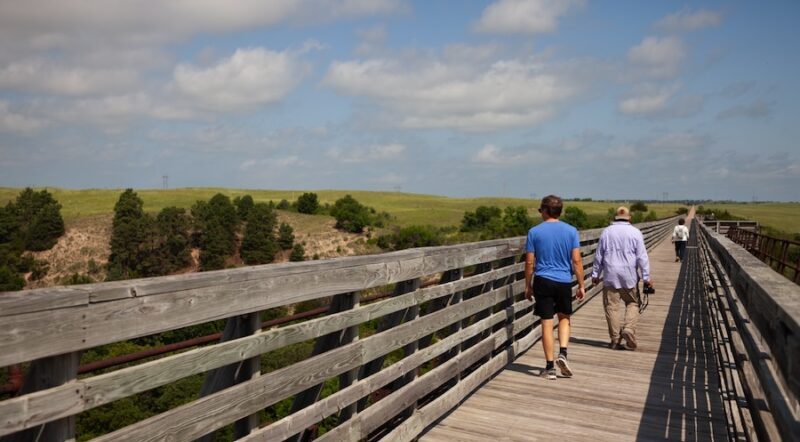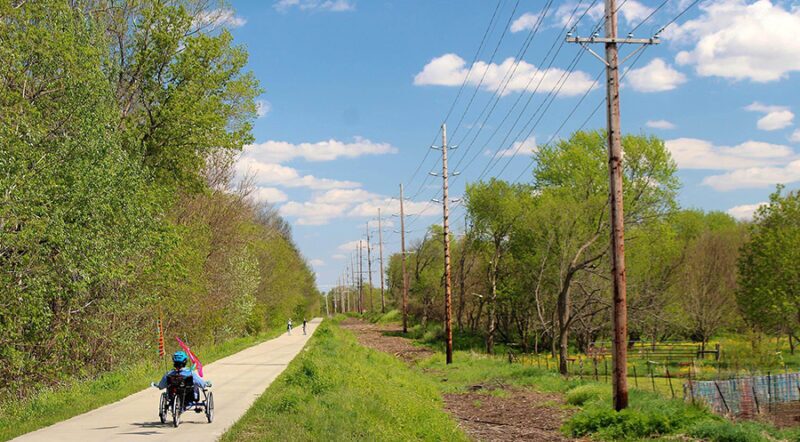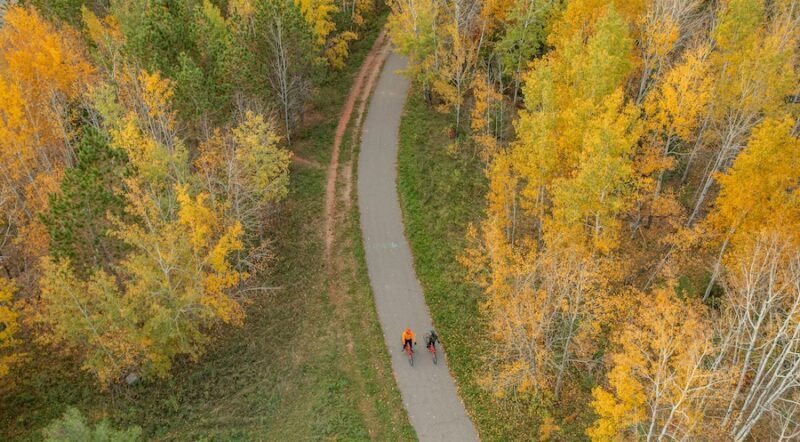30 Years: Birth and Evolution of the American Rail-Trail Movement
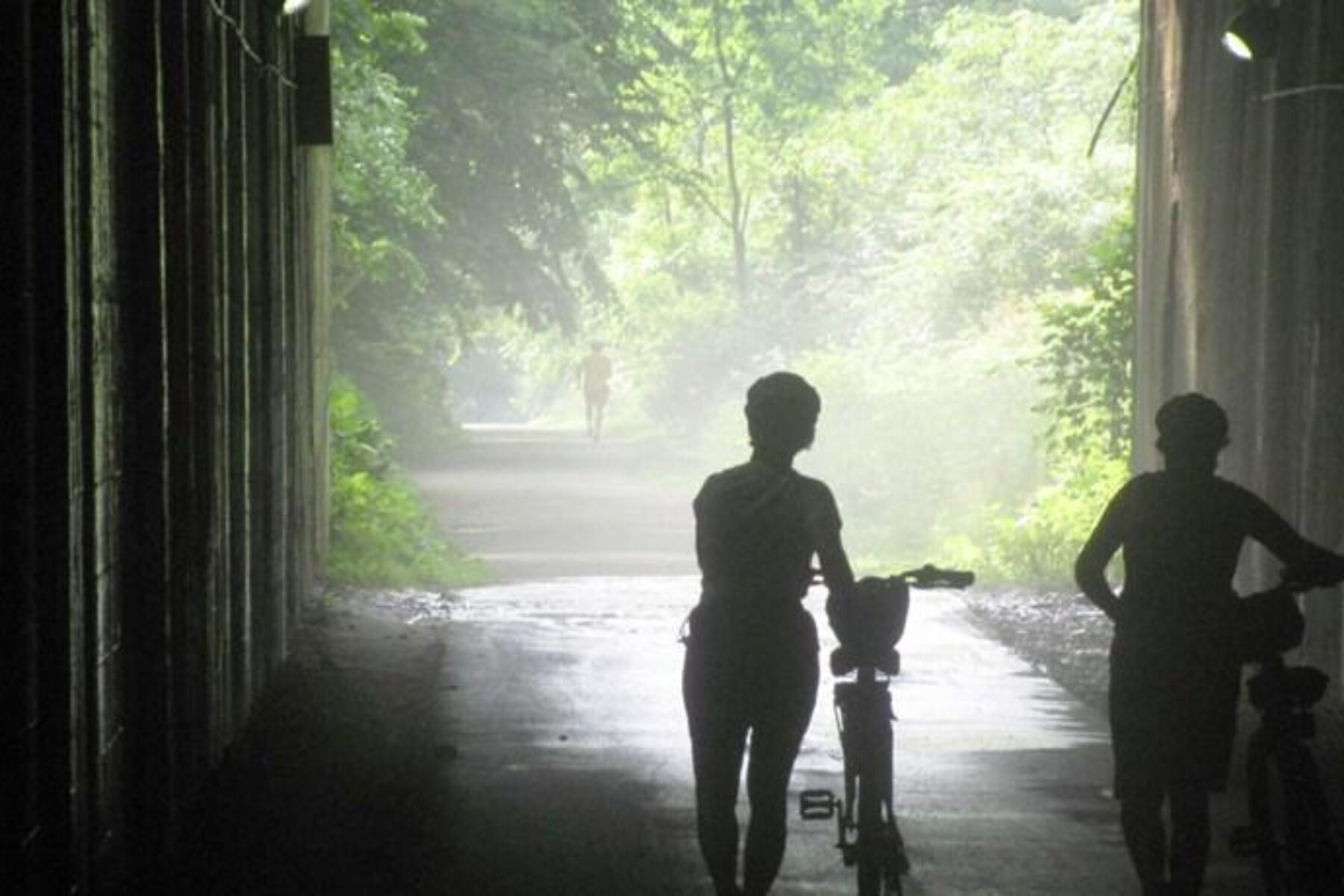
From preserving rail-trails to creating healthier communities: RTC celebrates the evolution of the American Rail-Trail Movement and its 30th anniversary in 2016.
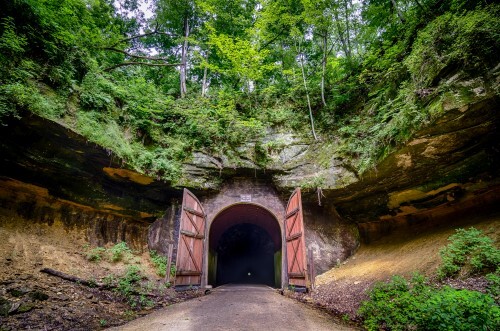
The U.S. rail-trail movement began not with a bang—but as an intriguing idea that quietly took hold in the Midwest in the 1960s and eventually spread across the country. By that time, the railroad industry was in serious decline, eclipsed by automobile and air travel; between 1930 and 1970, an estimated 38,000 miles of rail lines were abandoned (by 1990, the number jumped to 103,000 miles). People started exploring the unpaved corridors on foot, and the lasting moniker “rails-to-trails” began to take hold.
The Cathedral Aisle Trail, a short walking path built on an abandoned rail corridor in an old hunting preserve, quietly materialized in South Carolina in 1939, but multi-use rail-trails did not come into being until the 1960s with the Illinois Prairie Path and the Elroy-Sparta State Trail in Wisconsin. These pathways would serve as blueprints for thousands to follow.
RELATED: 10 Rail-Trails That Helped Build the Movement
Birth of a Golden Age
Concerned about the potential permanent loss of the country’s rail corridors, the U.S. Congress amended the National Trails System Act in 1983 to create “railbanking,” a process by which inactive corridors could be preserved for future rail use through their transformation into trails.
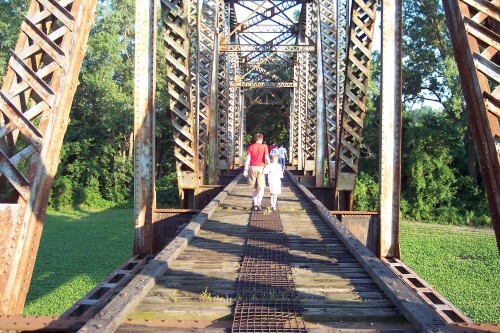
A year later, a group of conservation and outdoor professionals, biking and walking advocates, and railroad history buffs started meeting in Washington, D.C., to explore ways mobilize the rail-trail movement. RTC co-founders Peter Harnik and David Burwell are credited with writing and shopping around, respectively, the first funding proposal for RTC—which officially opened its doors in 1986. Philanthropist Larry Rockefeller and the National Wildlife Federation supplied startup funding, and pro bono legal support was provided by attorney Charles Montagne of Covington & Burling.
In the Spring 2006 Rails to Trails article, “A Trip Down Memory Trail: 20 Years of RTC,” Kristen Fletcher writes about the early years, stating: “RTC faced no shortage of skeptics. Many thought the mission was too narrow. Others said there was no constituency for such a group.”
“We were told that people would never support a trails organization,” Burwell recalled. “We felt that the counter argument was that this was not just trails but our national railroad heritage. We were protecting our history. It was adaptive use of a resource—the recycling of a whole transportation system.”
And through grassroots efforts, RTC’s supporter base would continue to strengthen. “We were like Paul Revere on the telephone, calling everyone we knew to warn them about rail corridors that were coming up for abandonment,” quoted Harnik.
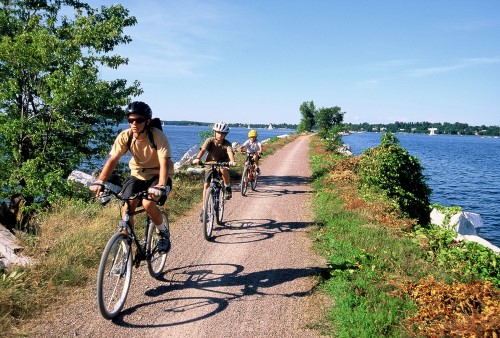
Over the next decade, RTC helped inventory rail lines and assisted groups from coast to coast. RTC also helped secure two major victories for the movement. In the dawn of the 1990s, RTC participated in the landmark case Preseault v. United States, in which a 1990 Supreme Court decision unanimously upheld the constitutionality of railbanking (the piece of land in question would become the Island Line Rail Trail in Vermont). In 1991, RTC helped secure the first federal funding for trails in the transportation bill via two programs, the Recreational Trails Program and Transportation Enhancements (TE) (now Transportation Alternatives), the latter of which remains the largest source of federal trail funding in America.
“Rail-trails became part of the American language and landscape,” writes Fletcher.
We were told that people would never support a trails organization. We felt that the counter argument was that this was not just trails but our national railroad heritage.
– RTC Co-Founder David Burwell
Rail-Trail Renaissance
In 2001, the year Keith Laughlin left his position in the White House Council on Environmental Quality to become President of RTC, there were 11,500 miles of known rail-trails in the U.S. Laughlin remembers substantial support for the movement at that time.
“When I arrived, RTC and our movement were healthy due to the leadership of David and Peter. There was strong support, both among the public and in Congress, for rail-trails,” Laughlin states. “We also had a well-defined legislative agenda, which focused on protecting federal trail funding and railbanking. Those were the ‘dual pillars’ that were essential to our success in the 1990’s and vital to keeping trail building going in America.”
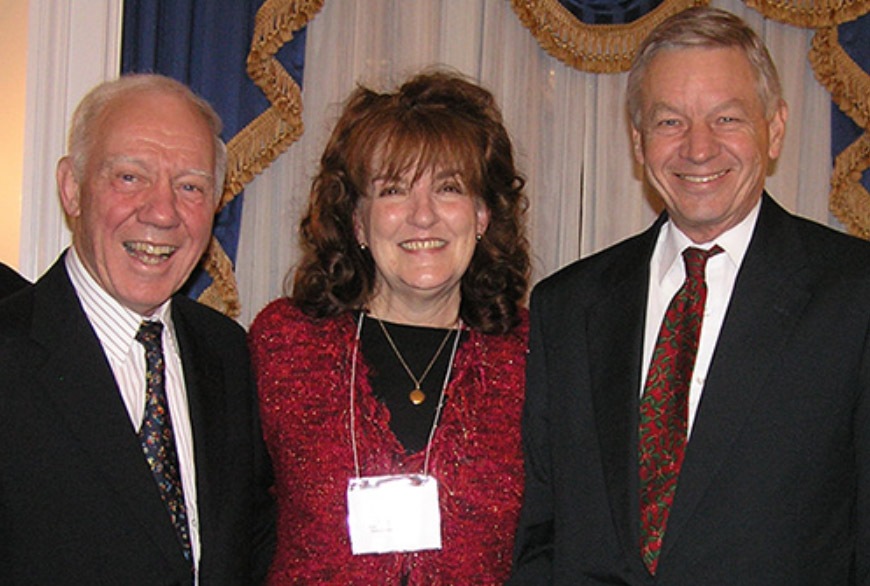
Despite RTC’s achievements, however, Laughlin says there were always new challenges. In 2003, RTC played a central role in successfully defending TE, which was under attack in the U.S. House of Representatives. RTC’s collaboration with Rep. Tom Petri (R-Wis.) and Rep. James Oberstar (D-Minn.) to secure House votes against its elimination resulted in a dramatic 327 to 90 victory.
This set the stage for RTC’s 2005 victory to preserve TE in the federal transportation bill, which also introduced two new biking and walking programs: Safe Routes to School and the Nonmotorized Transportation Pilot Program (NTPP). NTTP, which tested active-transportation investments in four U.S. communities, would go on to avert 85.1 million vehicle miles between 2009 and 2013.
RTC would go on to fight for trail funding in 2007, 2012 and 2015—and today, advocacy remains a core focus of the organization’s activities.
Trail Networks of the Future
In three decades, the U.S. rail-trail movement has grown from 250 miles of known rail-trails to more than 22,000 miles of completed projects and 8,000 miles of projects in progress. It’s the perfect time, according to Laughlin, for RTC to focus on “connecting individual trails into seamless systems.”
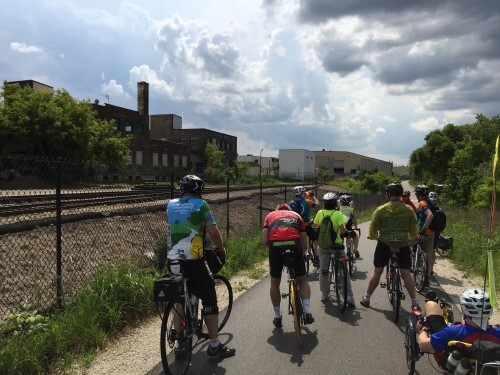
RTC has taken a lead role in helping to develop several massive trail network projects around the U.S., including: the 750-mile Circuit Trails network in Greater Philadelphia/Camden; the 400-mile Route of the Badger destination biking network in Southeastern Wisconsin; the 1,450-mile Industrial Heartland Trails network in the Mid-Atlantic and Midwest; the 1,000-mile Bay Area Trails Collaborative in California; and the 35-mile Baltimore Greenway Trails Network in Baltimore, Maryland.
Laughlin emphasizes the importance of the Baltimore project, which will link urban trails to neighborhoods, transit, employment centers, Baltimore’s popular “Inner Harbor” and prominent city parks. “It’s a smaller regional project serving an urban population—including many underserved communities—and it can serve as a model for other similar projects around the country,” says Laughlin.
RELATED: Meet the Badger: 400-Mile Trail Network Takes Hold in Southeast Wisconsin
RTC’s continued focus on technology helped propel RTC forward in the past decade and will be a keystone of its successful future. To that end, the organization is also working on the creation of a new set of information technology tools to help support regional trail network development through its three-year T-MAP project.
“Our ultimate goal is to improve the economic and environmental health of Americans communities and the personal health of the people who live there,” says Laughlin. “To achieve this, we will reconnect America with trails in the same way that railroads once connected people and places.”

Donate
Everyone deserves access to safe ways to walk, bike, and be active outdoors.
